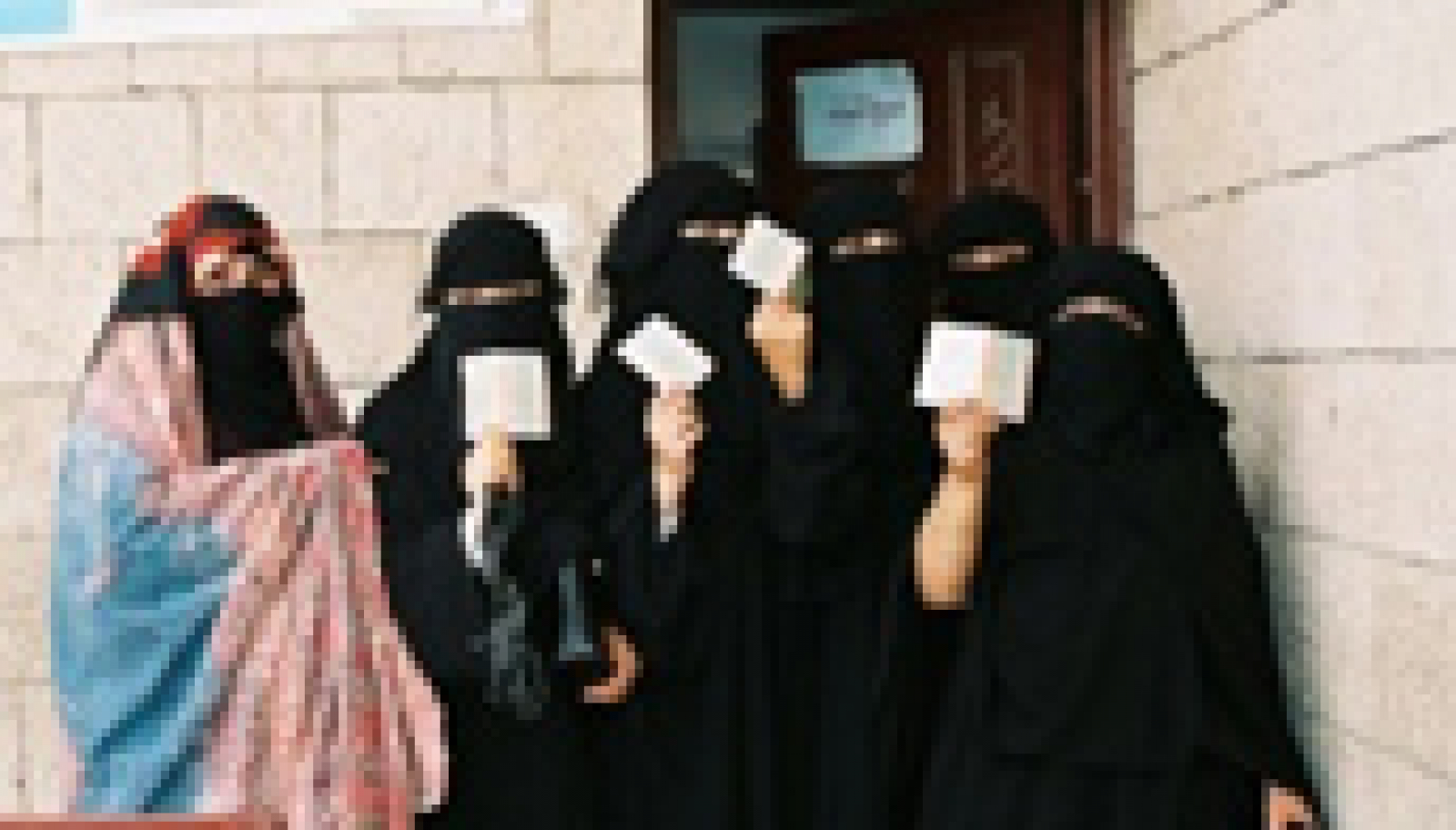
SHARE
On Sept. 20, the citizens of Yemen voted in presidential and local elections, only the second of such elections since the country’s unification in 1990.
Historically, Yemen’s elections have been plagued by tense relations between political parties and allegations of misconduct by electoral commissions. The country’s rural environment and severe poverty are additional challenges to election administration. Both civic groups and political parties have a vested interest in assuring that candidates can campaign freely, voters have equal access to polling centers and a reasonable and uniform process for counting ballots is in place.
The 2006 local and presidential elections were only the second such elections in Yemen. The local elections were highly contested across the country. While President Ali Abdullah Saleh, who came to power in a 1978 military coup, was expected to be re-elected in the presidential election, he faced the first true opposition candidate to his presidency. These elections were seen as a critical step in establishing a non-partisan and transparent electoral process that political parties and Yemeni citizens perceive as legitimate, therefore increasing their willingness to abide by and respect the results of the polls.
After its unification in 1990, the Republic of Yemen, situated on the southwestern corner of the Arabian Peninsula, initiated a rapid process of political modernization. Reform efforts focused on allowing and even encouraging the development of opposition parties. Other important changes included the integration of women into the political processes, the establishment of an independent electoral commission, and broadening freedom of the press. Initially, these reforms were relatively successful and in 1993 Yemen held its first multi-party legislative elections. A 1994 conflict between the former ruling parties of the north and south caused a brief setback in the development of new democratic institutions but in 1997 the country managed to hold its second multi-party elections. In 1999 Ali Abdullah Saleh became the first democratically elected President of Yemen.
Despite flaws in the early parliamentary and presidential elections Yemen has taken many positive steps toward democratic consolidation. In 2001, the Supreme Court of Elections and Referenda (SCER) was established as an independent electoral authority to administer and oversee elections. The SCER was relatively successful in managing the parliamentary elections of 2003, although their impartiality and independence was questioned by some. However, the creation of this electoral authority and the fact that it continues to engage in discussions with opposition parties and NDI’s local partners has encouraged greater confidence in the electoral process.
However, significant shortcomings continued to plague the process as Yemen prepared for elections. These included severe voter registration problems, specifically regarding underage voters, bias in the media, restrictions on election observers, and election-related violence. In late July, NDI sent a delegation to Yemen to assess the pre-election environment in anticipation of the September vote and offer recommendations.
During the campaign period and on election day, NDI continued to support the efforts of over 1,000 domestic monitors. While President Saleh was re-elected to office, the final election results stated that opposition presidential candidate Faisal Bin Shamlan captured an unprecedented 20 percent of the vote. In its preliminary report, the European Election Observation Mission described the elections as being "open and genuine," despite some concerns about overcrowding at the polls, possible breaches of vote confidentiality and restrictions on women's access to voting places. Both the EU and NDI are expected to release final observation and monitoring reports in November 2006.
Although no one expected the presidential and local elections to have been flawless, they nonetheless were seen to be a gauge of progress for the country, and an indication of what areas will require the most work in the future.
–
Published on Sept. 13, 2006


